Why ABSD For Developers Needs To Be Tweaked And How It Affects You As A Home Buyer
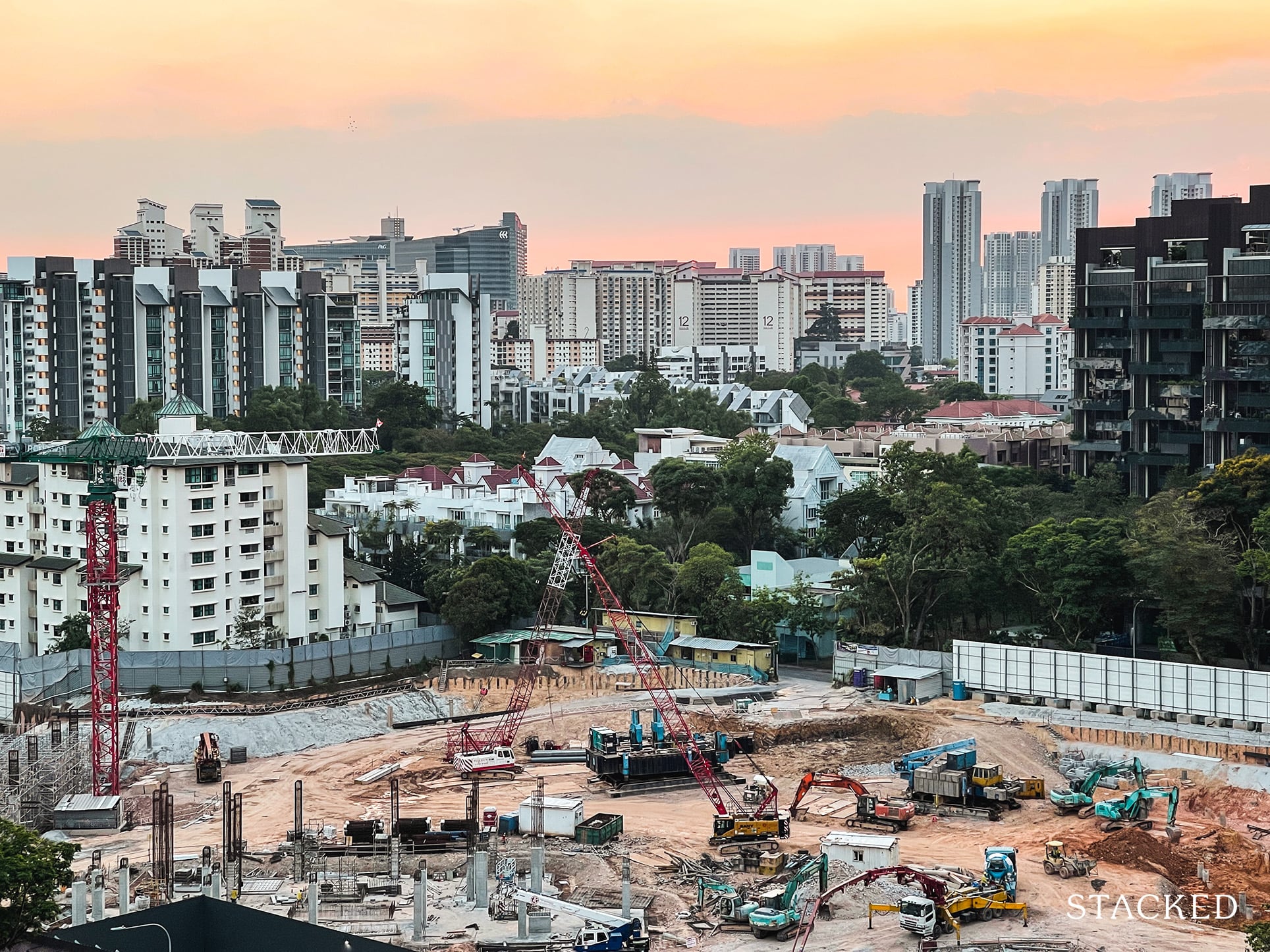
Get The Property Insights Serious Buyers Read First: Join 50,000+ readers who rely on our weekly breakdowns of Singapore’s property market.
A seasoned content strategist with over 17 years in the real estate and financial journalism sectors, Ryan has built a reputation for transforming complex industry jargon into accessible knowledge. With a track record of writing and editing for leading financial platforms and publications, Ryan's expertise has been recognised across various media outlets. His role as a former content editor for 99.co and a co-host for CNA 938's Open House programme underscores his commitment to providing valuable insights into the property market.
Most home buyers are familiar with the concept of Additional Buyers Stamp Duty (ABSD) as it applies to them. What’s less commonly known is that property developers also have to pay ABSD; and this added tax shapes multiple decisions. From the way developers price their property, right down to development concepts, the ABSD on developers has a significant – yet not directly visible – effect on home buyers. Here’s what you should know about it:
What is ABSD for developers?
The ABSD for developers is a tax applied on the land price. This is 30 per cent of the land price, which is paid upfront. It is applicable on any development that comprises of five or more units (this is virtually every residential development in Singapore).
However, developers can get remittance of 25 per cent of the land price, on condition that the project is completed and fully sold within five years.
The primary reason for this is to prevent land hoarding. If there was no time limit, a developer – or multiple developers – could scheme to buy up land, but refuse to build anything. Over time this would create artificial housing scarcity, and drive-up residential property prices.
There are other reasons for the ABSD on developers however; such as curbing exuberance for en-bloc sales, and putting pressure on developers to keep homes affordable (if the pricing is exorbitant, it’s hard to sell all the units before the deadline).
While this is largely considered to be “the developer’s headache”, it can also impact home buyers and property owners. Some of the factors are:
- The pricing of new launch properties
- The launch timing of new projects
- En-bloc prospects
- Innovation and development concepts
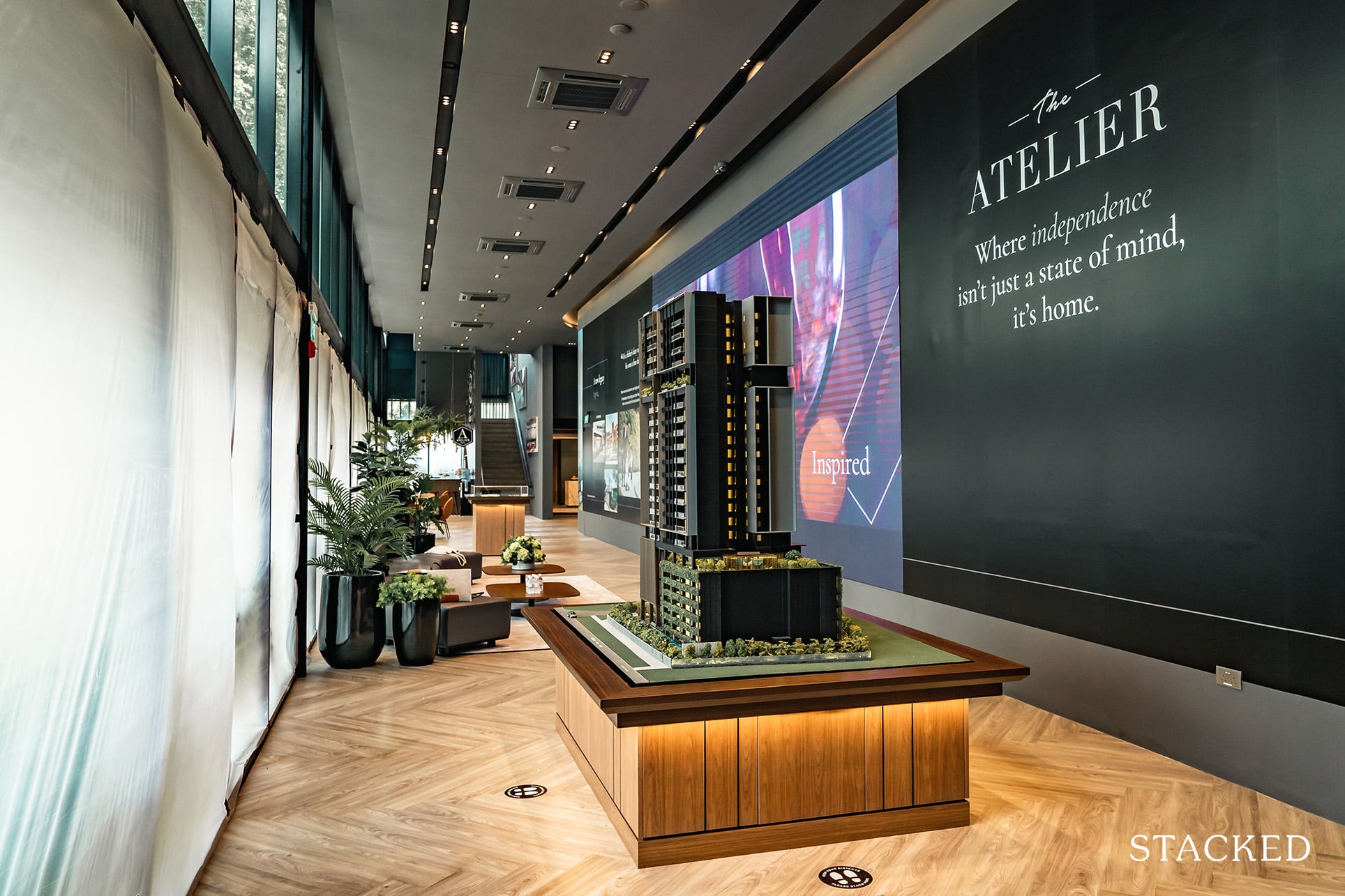
1. The pricing of new launch properties
On the one hand, a five-year deadline could force developers to keep prices manageable; and it may even lead to occasional discounts. The most recent example of this was the fire sale at 38 Jervois. Remaining units were sold at discounts of up to 24 per cent, as the developer rushed to meet the ABSD deadline.
This is relevant to home buyers in several ways. It is, first of all, the chief concern of those who buy for early-bird discounts: buyers are often assured that, if they buy during the VIP phase or earlier launch phases, they will make “instant profit” when the price normalises later. But a looming ABSD deadline can bring an end to such prospects, with buyers in the later phases of the launch getting larger discounts.
There are even market watchers who focus on properties that were launched around five years ago, in the hopes of finding ABSD deadline-related discounts. After all, if a developer only has four or five units left, offloading them at a small loss is better than paying 30 per cent of the land price.
We should point out, however, that it’s not all discounts and benefits for home buyers
Quite often, it’s the bigger players in the property market who truly get to seize such advantages. Remember, the developer needs to clear out all the remaining units, and even leaving one or two unsold will mean there’s no ABSD remission. As such, discounts are often given to bigger players, who agree to buy up all the remaining units at once.
ABSD-related fire sales are most devastating to the earliest groups of buyers, who may see transaction amounts fall significantly below what they initially paid. If anything, it is probably better to incentivise agents to move the units for the developer to maintain its price (and reputation).
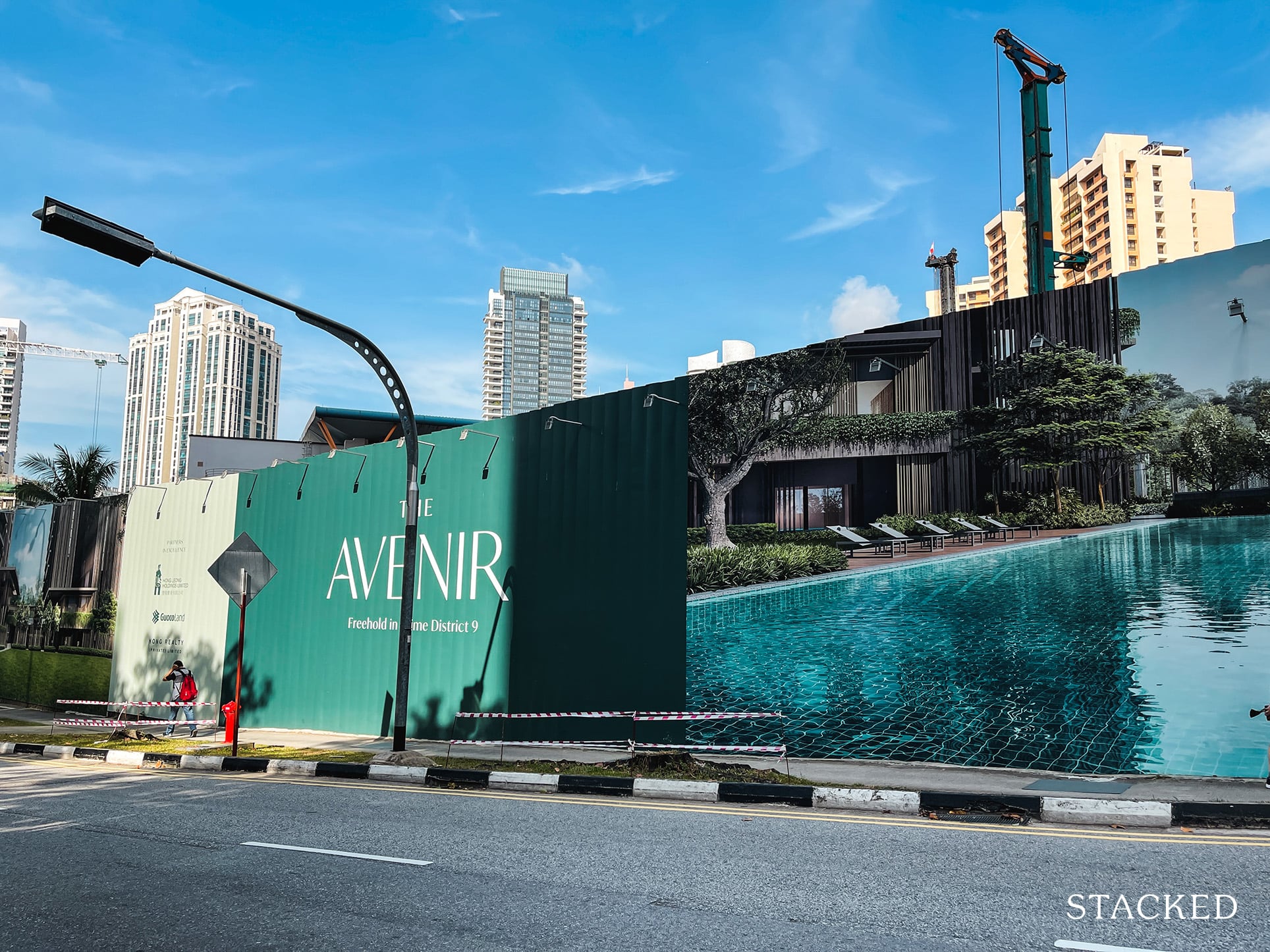
2. The launch timing of new projects
A common question is why developers would launch new projects, even at the seemingly worst times. The last example of these would be properties launched near the time of the Circuit Breaker; after all, HDB deferred the launch of BTO flats due to Covid-19.
(Some of the launches near the time of the Circuit Breaker, such as Kopar at Newton and The M, sold well anyway; but this doesn’t change the fact that launching near the height of the pandemic in Singapore was quite the risk).
Prior to this, we also saw projects launched close to the aftermath of cooling measures. In May 2019, for instance, Woodleigh Residences relaunched at a price point about 10 to 15 per cent lower than its initial October 2018 launch. The initial launch hadn’t fared as well, probably it was too close to new cooling measures passed in July 2018 (buyers tend to adopt a wait-and-see approach in case of falling prices, right after cooling measures).
If you’re wondering why developers don’t just time their launches further from these events, the answer is often related to the ABSD deadline. Few developers have the luxury of waiting, and this sometimes results in property launches even during difficult times.
More from Stacked
I Have A 5-Room HDB With Columns That Can’t Be Removed And Are An Eyesore. Are There Any Better Layout Ideas?
Dear StackedHomes,
One potential danger here is home buyers choosing to transact in an uncertain economy, because they don’t want to miss out on an essential location.
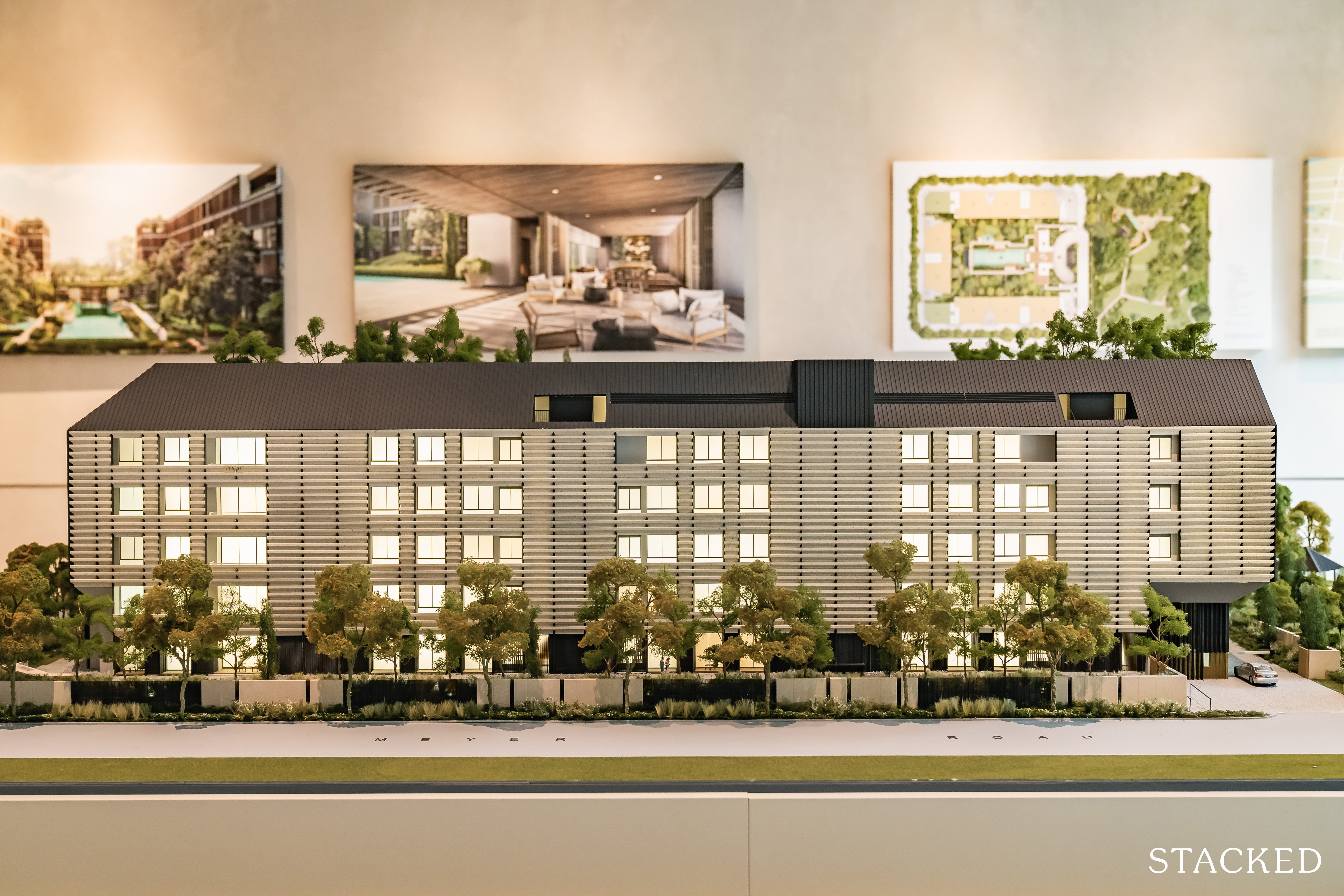
3. En-bloc prospects
One of the puzzling elements of ABSD for developments is that, barring a minimum unit count of five, there’s no consideration at all for size. Treasure at Tampines, with over 2,200 units, has to be completed and sold in five years. MeyerHouse, which has only 56 units, also gets the same five-year time limit. As such, developers are disincentivised from purchasing large land plots due to the risk involved.
This is disadvantageous to some home buyers, particularly those who elect to buy homes in big developments. This is unfortunate, as most of the time larger developments offer better affordability.
Outside of unit prices, consider the maintenance fees too when it comes to affordability: the smallest units at MeyerHouse have maintenance fees starting from $1,300 per month, but at Treasure at Tampines the lowest fees start at around $150 per month.
Granted, these two examples are on extreme ends of the spectrum – but the general principle applies throughout. Smaller developments lack the same economy of scale, which may not benefit the wider market.
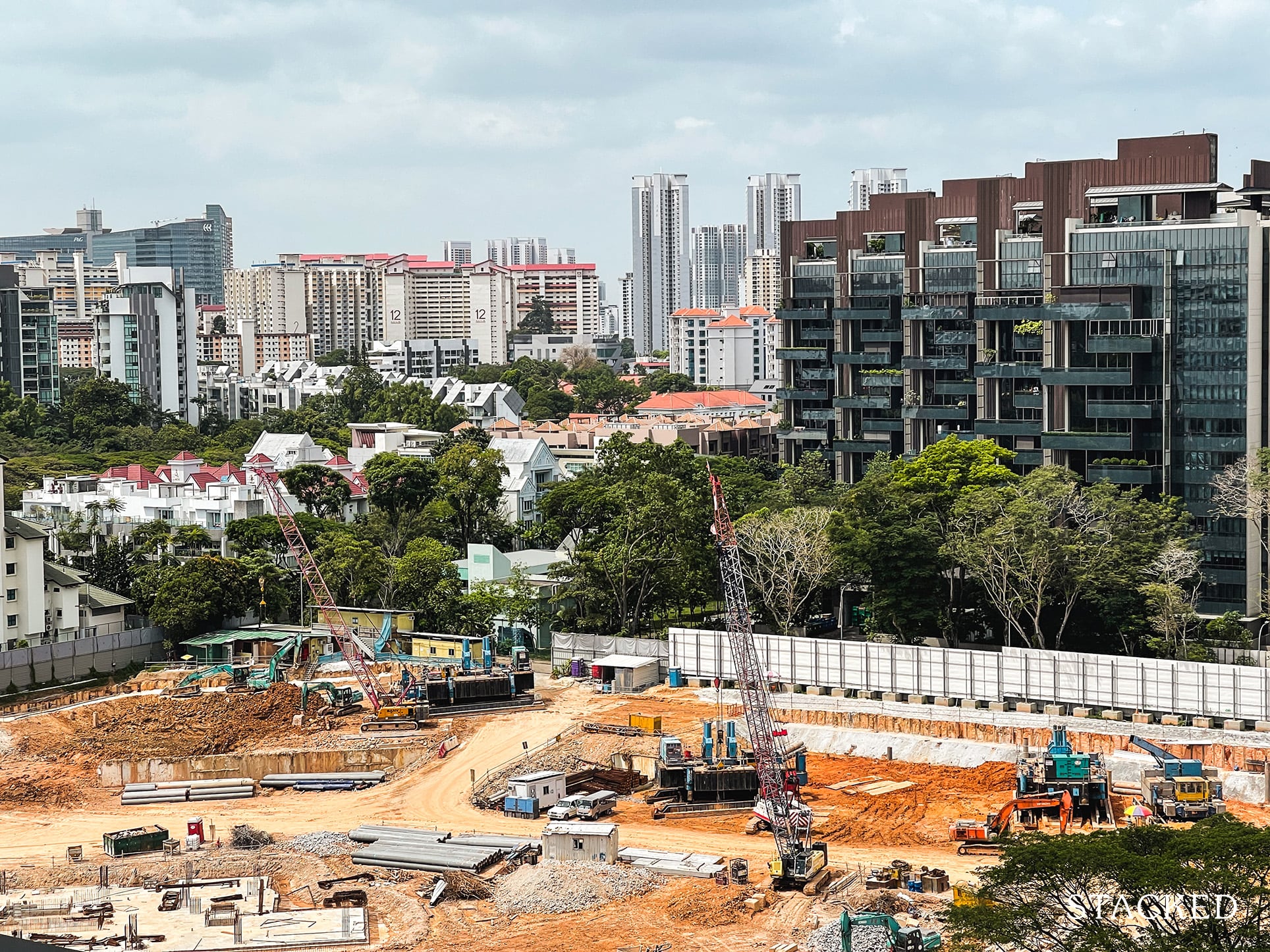
Property Market CommentaryWhat You Need To Know About En-bloc Sales In 2021
by Ryan J. Ong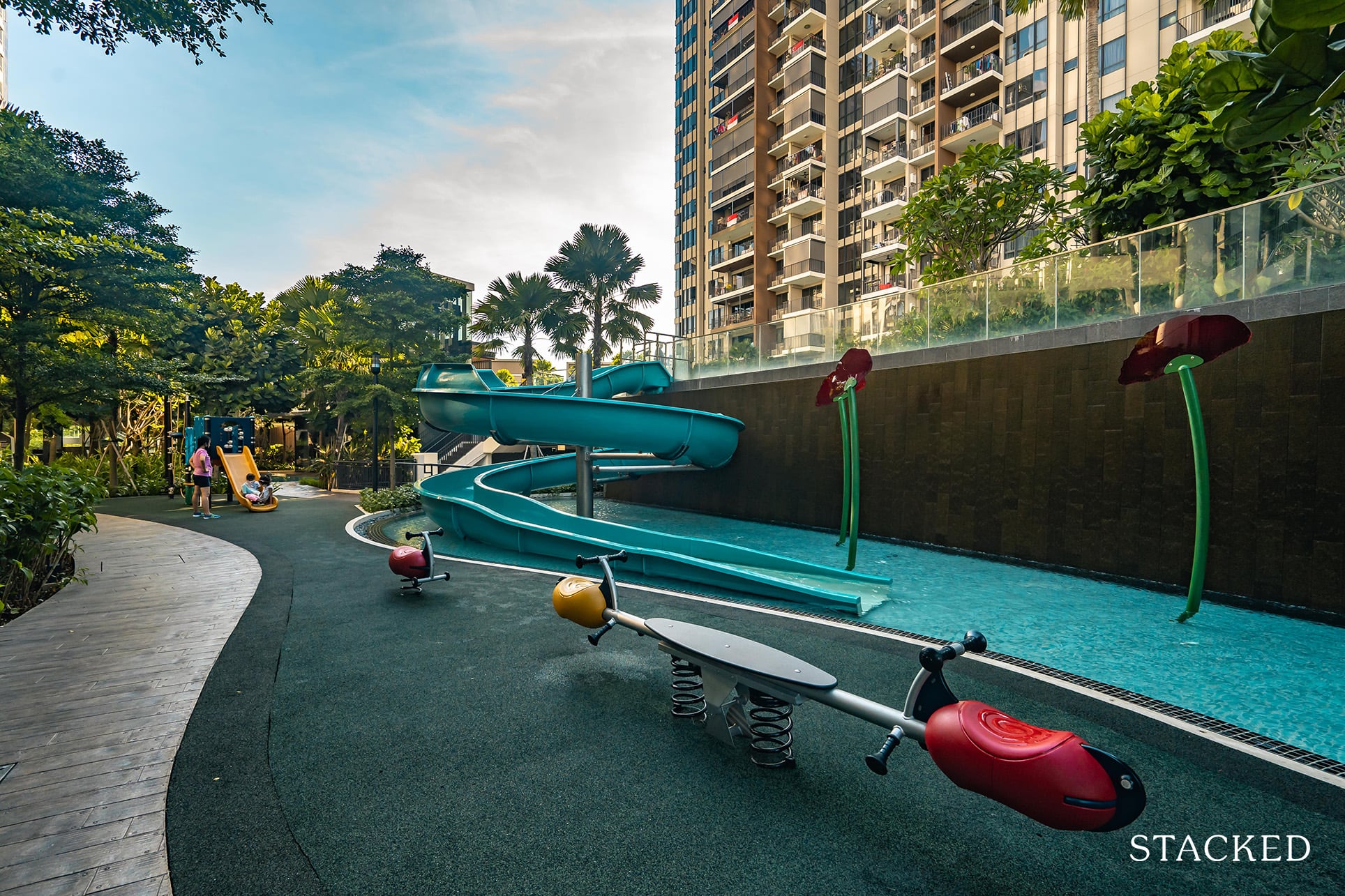
4. Innovation and development concepts
Barring a few outstanding examples (like The Interlace and the fun Savannah Condopark), a common complaint is that Singapore condos all look alike. Buyers have started to notice that developments lack uniqueness, and are generally cookie-cutter versions of each other.
Even if you’ve never owned a condo before, for example, you can probably rattle off a list of facilities that would match thousands of condo developments: pool, BBQ pit, gym, tennis court, etc. There’s so little differentiation at this point, that simply being able to use your EZ-Link as a condo pass is enough to make the news.
This isn’t for want of originality; it’s simply an issue of time. Developers who go with radical new concepts are taking a big risk. Remember, this time period is inclusive of getting architecture firms to pitch, developing the concept, establishing marketing plans, building the showflat, building the development and selling out all the units – all in a span of 5 years. As such, developers are incentivised to “play it safe”, and stick to established norms.
It’s also worth considering that ABSD has increased over time – it used to be set at just 15 per cent (a long time ago in 2011), and a full remission was possible. Doubling the rate has been punishing, and greatly narrowed the margins of developers. Couple that with increasing land costs (heightened competition from overseas developers) and construction costs, the current margins aren’t what they used to be before. Naturally with lower margins, it makes it increasingly hard to take a risk on a multi-million dollar project. This means a smaller budget, which also disincentivises them from new innovations or concepts.
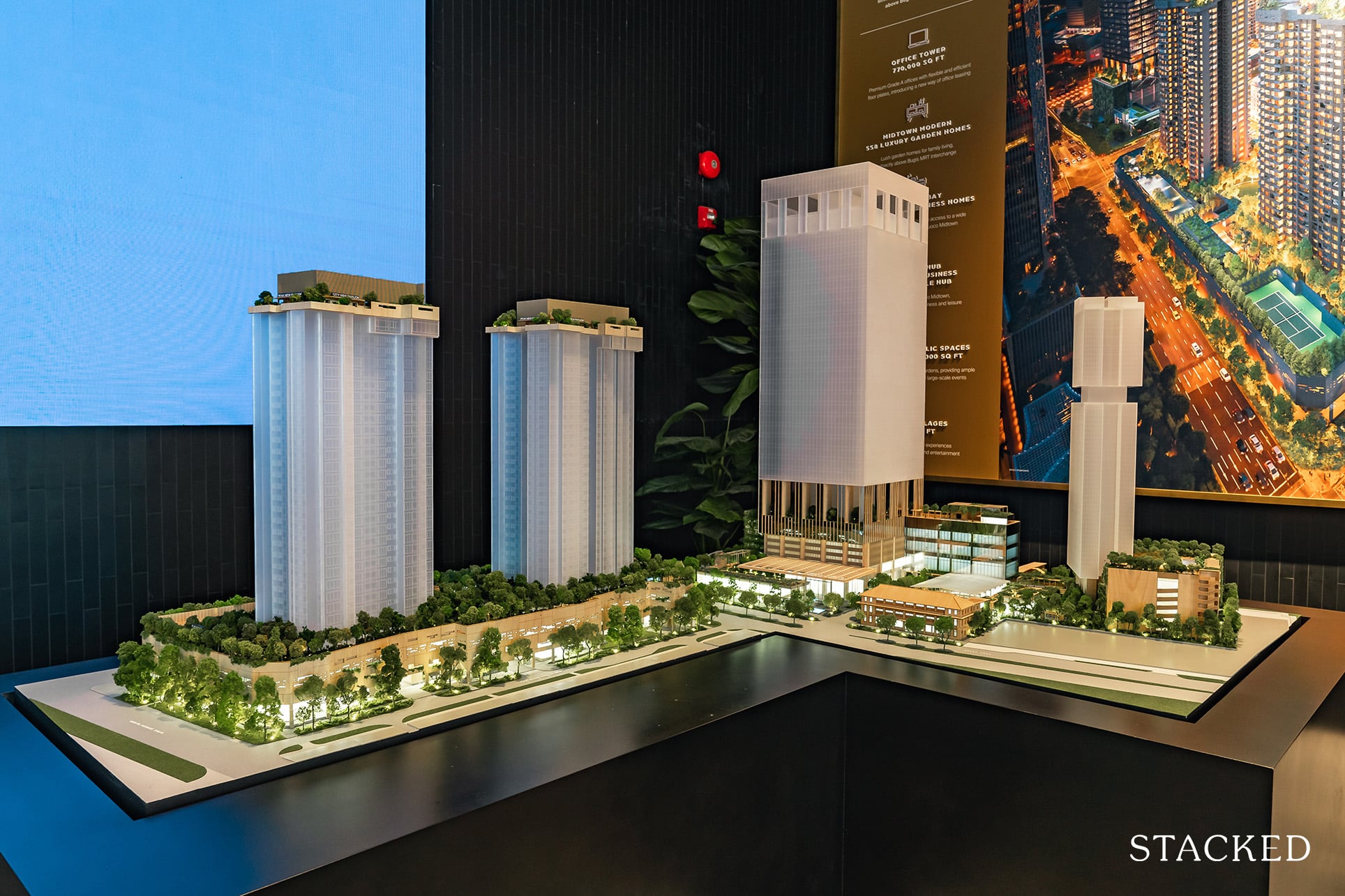
This isn’t to say ABSD for developers is all bad, or should be removed
It serves an important function in the Singapore private property market, and land-hoarders would have a dire impact on the market. However, it may be time to tweak the rules slightly.
One simple change could be varying the ABSD remission, based on the number of units remaining. That is, a developer with five per cent of units left would be able to get a larger remission, compared to one with 50 per cent of units left. This could be further modified to accommodate different development sizes, so that boutique, mid-sized, and mega-developments aren’t all subject to the same deadline.
The government has also shown some flexibility in light of Covid-19, granting developers extensions due to logistical issues. Varying the length of ABSD deadlines based on circumstance, and the nature of the project, can also help to avoid awkward launch timings.
It would also help to smooth out the boom-and-bust cycle of en-bloc sales. Right now, for example, we’re facing a resurgence of 2017-style en-bloc fever, because the last tranche of condos from that period have been mostly completed and sold. Five years later we’re likely to see another rush, as developers hurry to grab land for the next slate of projects.
Finally, a more flexible approach could lead to better variety and innovation in residential developments, which would benefit home buyers.
For more on the latest happenings and developments (literal and figurative) in the Singapore private property market, follow us on Stacked. We’ll also provide in-depth reviews of new and resale properties alike, to help your home buying or investment decision.
If you’d like to get in touch for a more in-depth consultation, you can do so here.
Ryan J. Ong
A seasoned content strategist with over 17 years in the real estate and financial journalism sectors, Ryan has built a reputation for transforming complex industry jargon into accessible knowledge. With a track record of writing and editing for leading financial platforms and publications, Ryan's expertise has been recognised across various media outlets. His role as a former content editor for 99.co and a co-host for CNA 938's Open House programme underscores his commitment to providing valuable insights into the property market.Read next from Property Market Commentary

Property Market Commentary Why The Singapore Property Market Will Be Different In 2026 — And It’s Not Just About Prices

Property Market Commentary 2025 Year-End Review Of The Singapore Property Market: What The Numbers Reveal

Property Market Commentary How The HDB Resale Market Performed In 2025, And What It Means For 2026 Prices

Property Market Commentary 4 Key Trends Reshaping Singapore’s New Launch Condo Market In 2026
Latest Posts

Pro This 21-Year-Old Condo Didn’t Sell Out Initially, Yet Became A Top Performer

Editor's Pick What I Only Learned After My First Year Of Homeownership In Singapore

Singapore Property News Why More Land Doesn’t Automatically Fix Housing In Singapore

On The Market Here Are The Cheapest 4-Room HDB Flats in Central Singapore You Can Still Buy From $490K

Editor's Pick Should We Buy An Old 99-Year Leasehold Condo To Live In: Will It’s Value Fall When The Lease Runs Out?

Pro How A Once “Ulu” Condo Launched In 1997 Became A Top Performer

Editor's Pick I Reviewed A New Launch 4-Bedroom Penthouse At Beauty World

Editor's Pick Why Singaporean Families Are Looking At This Landed Enclave From Around $4M

Singapore Property News Lentor’s First Condo Is Complete — The Early Profits May Surprise You

Property Advice We Own A $800K 1-Bedder And A $1.1M 3-Bedder: Is It Possible To Upgrade To A 4-Bedder Condo?

On The Market These Are Some Of The Cheapest 5-Room HDB Flats Left In Central Singapore

Pro This 698-Unit Ang Mo Kio Condo Launched At The Wrong Time — And Still Outperformed Peers

Singapore Property News $281.2M in Singapore Shophouse Deals in 2H2025 — But That Number Doesn’t Tell the Full Story

Property Investment Insights These Resale Condos In Singapore Were The Top Performers In 2025 — And Not All Were Obvious Winners

Singapore Property News CapitaLand–UOL’s $1.5 Billion Hougang Central Bid May Put Future Prices Above $2,500 PSF


